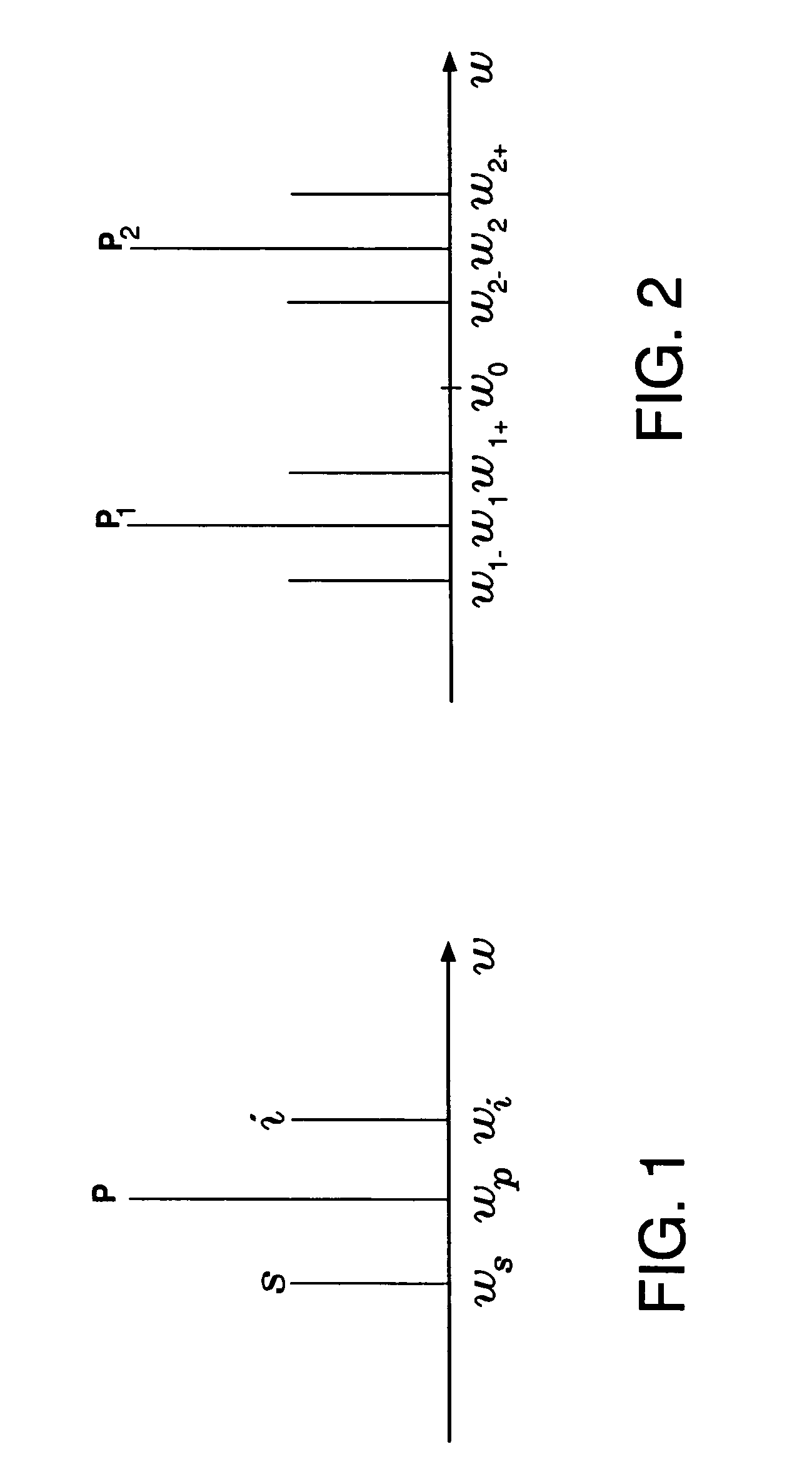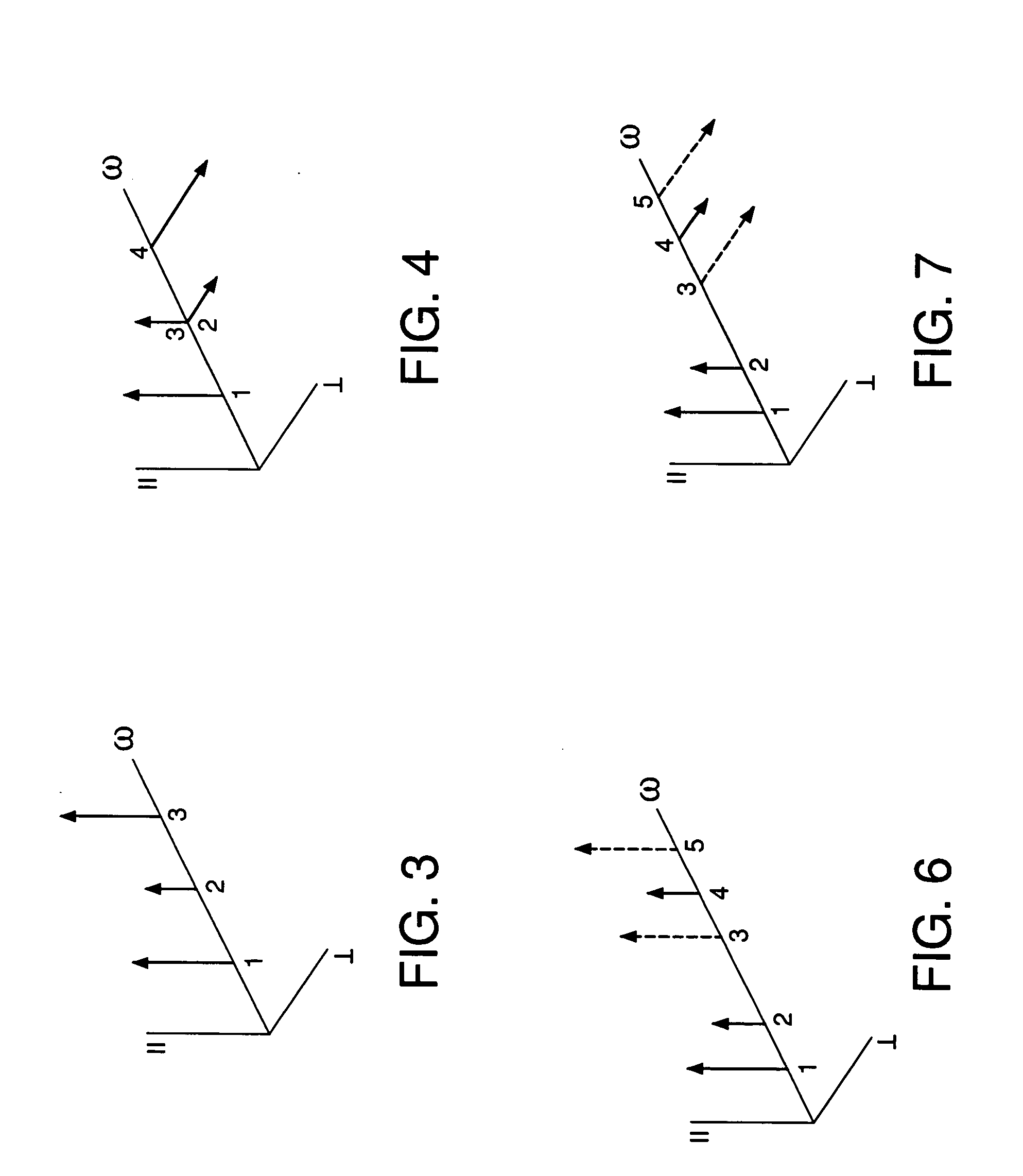Phase-sensitive amplification in a fiber
a phase-sensitive amplification and fiber technology, applied in the direction of laser optical devices, laser details, electrical apparatus, etc., can solve the problem that the psas suitable for use in fiber-based optical communication systems is not yet sufficiently developed
- Summary
- Abstract
- Description
- Claims
- Application Information
AI Technical Summary
Benefits of technology
Problems solved by technology
Method used
Image
Examples
Embodiment Construction
[0016] Reference herein to “one embodiment” or “an embodiment” means that a particular feature, structure, or characteristic described in connection with the embodiment can be included in at least one embodiment of the invention. The appearances of the phrase “in one embodiment” in various places in the specification are not necessarily all referring to the same embodiment, nor are separate or alternative embodiments mutually exclusive of other embodiments.
Optical Parametric Amplification
[0017] As known in the art, optical parametric amplification (OPA) is a process that produces a tunable coherent optical signal via nonlinear optical processes, in which, typically, one or two pump-wave photons are converted into two new photons with conservation of photon energy and momentum. The waves corresponding to the two new photons are usually referred to as a signal and an idler. An excellent review of the fundamentals of OPA can be found in a book by G. P. Agrawal, “Nonlinear Fiber Opti...
PUM
 Login to View More
Login to View More Abstract
Description
Claims
Application Information
 Login to View More
Login to View More - R&D
- Intellectual Property
- Life Sciences
- Materials
- Tech Scout
- Unparalleled Data Quality
- Higher Quality Content
- 60% Fewer Hallucinations
Browse by: Latest US Patents, China's latest patents, Technical Efficacy Thesaurus, Application Domain, Technology Topic, Popular Technical Reports.
© 2025 PatSnap. All rights reserved.Legal|Privacy policy|Modern Slavery Act Transparency Statement|Sitemap|About US| Contact US: help@patsnap.com



